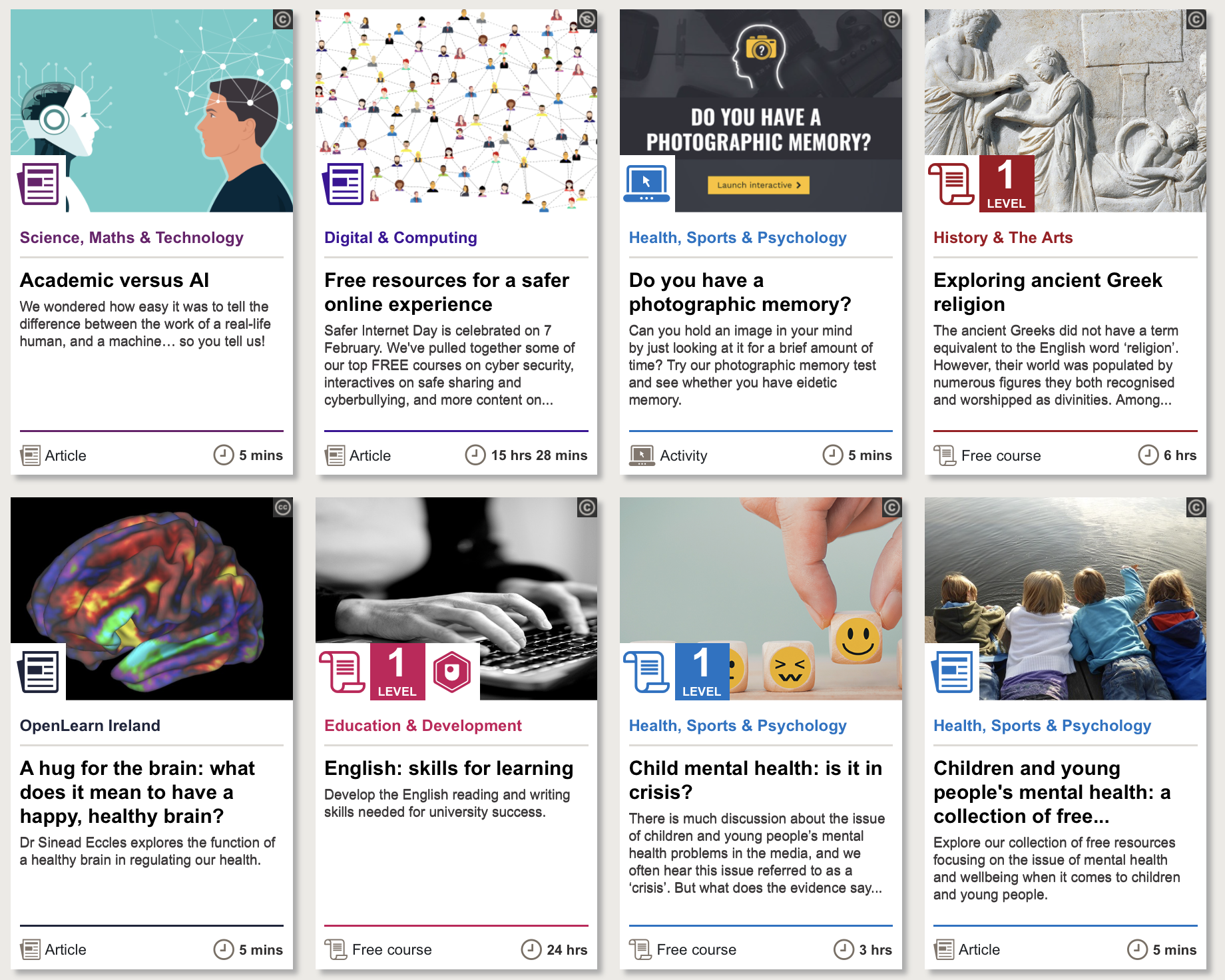1.6 Key features of open education

Screenshot of the OpenLearn homepage, February 2024
So far, you’ve learned that open education is intended to be accessible to everyone, irrespective of factors such as age, previous educational experience, gender, location, financial status or disability. Whether you're an independent learner, teacher, student, researcher, educational technologist, policymaker, or simply someone seeking to acquire knowledge and skills, open education could be the ideal choice for you. You do not have to enrol yourself in a formal education system or pay a fee to complete a course in most cases, and can learn and gain skills from anywhere, at any time. Open educational resources and courses can be studied for their own sake and can contribute towards gaining a certificate, a digital badge and even a degree in some circumstances. There are many different ways in which you can access open education and you'll explore some of them on this course. The screenshot above shows 8 of the hundreds of courses freely available from just one source of open courses - The Open University's OpenLearn platform.
In summary, open education can:
- minimise barriers to education
- help increase access to high quality learning, for example by removing cost- and location-related barriers
- increase individuals’ ownership of their learning by providing a choice of subjects and learning formats
- cultivate interdisciplinary practices by giving access to resources in many different subject areas and by supporting collaboration across disciplines
- encourage innovative practices by giving educators (and other professionals) access to other people’s approaches
- support life-long learning by offering learning opportunities relevant to different life stages and allowing participation in education alongside other commitments.
